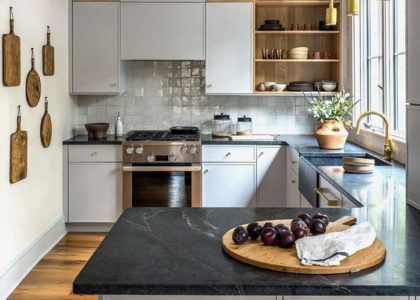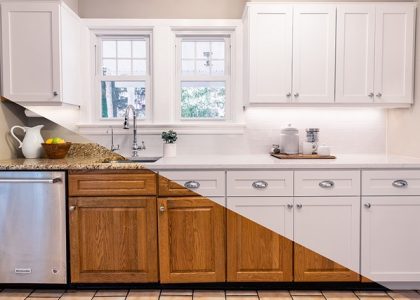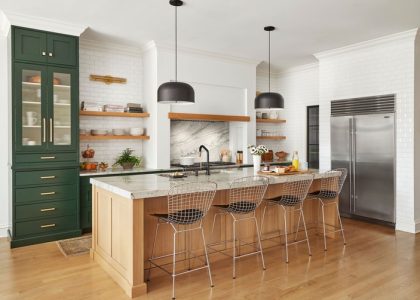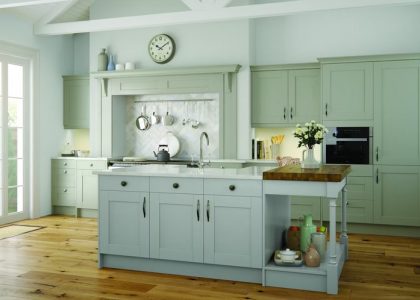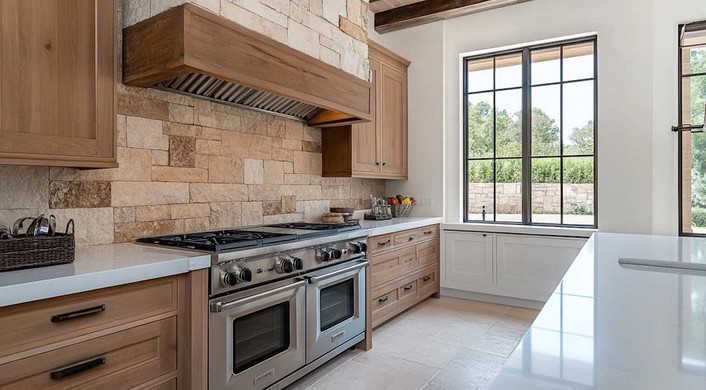
When it comes to enhancing the beauty and functionality of a kitchen, stone kitchen backsplashes have become a popular and enduring choice for homeowners and designers alike. These backsplashes not only protect your walls from spills and splashes but also add a sophisticated touch that elevates the entire room’s aesthetic. Stone, in its many natural forms, offers a variety of textures, colors, and patterns, making it an ideal material to introduce timeless elegance into your cooking space. This article explores the unique qualities of stone kitchen backsplashes, practical considerations for installation, and creative ideas to inspire your next kitchen remodel.
The Enduring Appeal of Stone Kitchen Backsplashes
Natural Beauty and Durability
Stone has been valued for centuries due to its natural beauty and unmatched durability. In kitchen design, stone kitchen backsplashes stand out because they combine both aesthetics and functionality. Materials like marble, granite, slate, and travertine bring unique patterns and colors that can complement a wide range of kitchen styles—from rustic farmhouse to ultra-modern minimalist.
One of the key advantages of stone is its ability to withstand heat, moisture, and daily wear. Unlike painted walls or tiled backsplashes with grout lines that may discolor or crack over time, a stone backsplash maintains its integrity with minimal maintenance. This resilience makes it perfect for the high-traffic area behind stoves, sinks, and countertops where splashes and spills are common.
Beyond practicality, stone backsplashes act as a focal point. The natural veining and texture of stone create visual interest and depth, making the kitchen feel more inviting and refined. Whether you opt for a bold slab of granite or a mosaic of slate tiles, stone backsplashes add an element of luxury that can increase your home’s value.
Practical Considerations for Choosing and Installing Stone Backsplashes
Selecting the Right Stone for Your Kitchen
Choosing the appropriate type of stone for your kitchen backsplash involves understanding your kitchen’s design, your lifestyle, and your maintenance preferences. Here are some commonly used stone types and their characteristics:
- Marble: Known for its elegant veining and smooth finish, marble adds a classic, luxurious feel. However, it is more porous and softer, requiring regular sealing to prevent stains and etching.
- Granite: A highly durable and heat-resistant stone, granite offers a wide range of colors and patterns. It’s relatively low maintenance compared to marble.
- Slate: With a more rustic and textured appearance, slate provides a natural, earthy look. It is slip-resistant but may require sealing.
- Travertine: Featuring warm, neutral tones and a porous surface with natural pits, travertine can be filled and sealed to create a unique backsplash that suits traditional or Mediterranean-style kitchens.
In addition to stone type, consider the size and thickness of the backsplash slabs or tiles. Larger slabs offer a sleek, seamless look with fewer grout lines, which can be easier to clean. Smaller tiles, on the other hand, can create intricate patterns and add more texture to your kitchen design.
Installation and Maintenance Tips
Proper installation is crucial to ensure your stone backsplash remains beautiful and functional for years. Because stone is heavy and sometimes brittle, it’s best to work with experienced professionals who understand how to prepare the wall surface, apply the adhesive correctly, and grout the joints without damaging the stone.
Maintenance varies depending on the stone type, but most stone backsplashes require periodic sealing to protect against stains and moisture penetration. Routine cleaning with a mild detergent and soft cloth will help preserve the stone’s finish. Avoid harsh chemicals or abrasive scrubbers that can damage the surface.
Creative Ideas to Incorporate Stone Kitchen Backsplashes
Mixing Materials and Textures for a Unique Look
A rising trend in kitchen design is combining stone kitchen backsplashes with other materials to create a layered, dynamic effect. For example, pairing a sleek marble backsplash with wooden cabinetry introduces warmth and contrast, while integrating metallic accents like brass or copper fixtures can enhance the luxurious feel.
Another creative idea is to use a stone backsplash as an accent wall behind the stove or sink, while opting for simpler materials elsewhere to avoid overwhelming the space. This approach highlights the stone’s natural beauty and makes it a statement feature.
Some homeowners are experimenting with textured stone tiles such as 3D carved travertine or rough-hewn slate to add tactile interest. These can catch the light in different ways throughout the day, changing the kitchen’s ambiance and making it visually engaging.
For a modern twist, consider using large-format stone slabs with minimal veining and clean edges, installed flush with the countertops and cabinetry. This creates a seamless flow that makes the kitchen feel open and cohesive.
Conclusion
Incorporating stone kitchen backsplashes into your cooking space is an investment in both style and practicality. Their timeless elegance, combined with the durability and versatility of natural stone, ensures that your kitchen will remain a beautiful and functional centerpiece for years to come. Whether you choose the classic sophistication of marble, the rugged charm of slate, or the sleekness of granite, stone backsplashes offer a unique opportunity to express your design vision while protecting your walls. By understanding the characteristics of different stones, installation requirements, and creative design ideas, you can create a kitchen backsplash that is truly one of a kind. Ultimately, stone kitchen backsplashes are more than just a surface—they are an enduring symbol of quality and style in your home.

